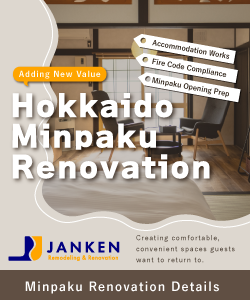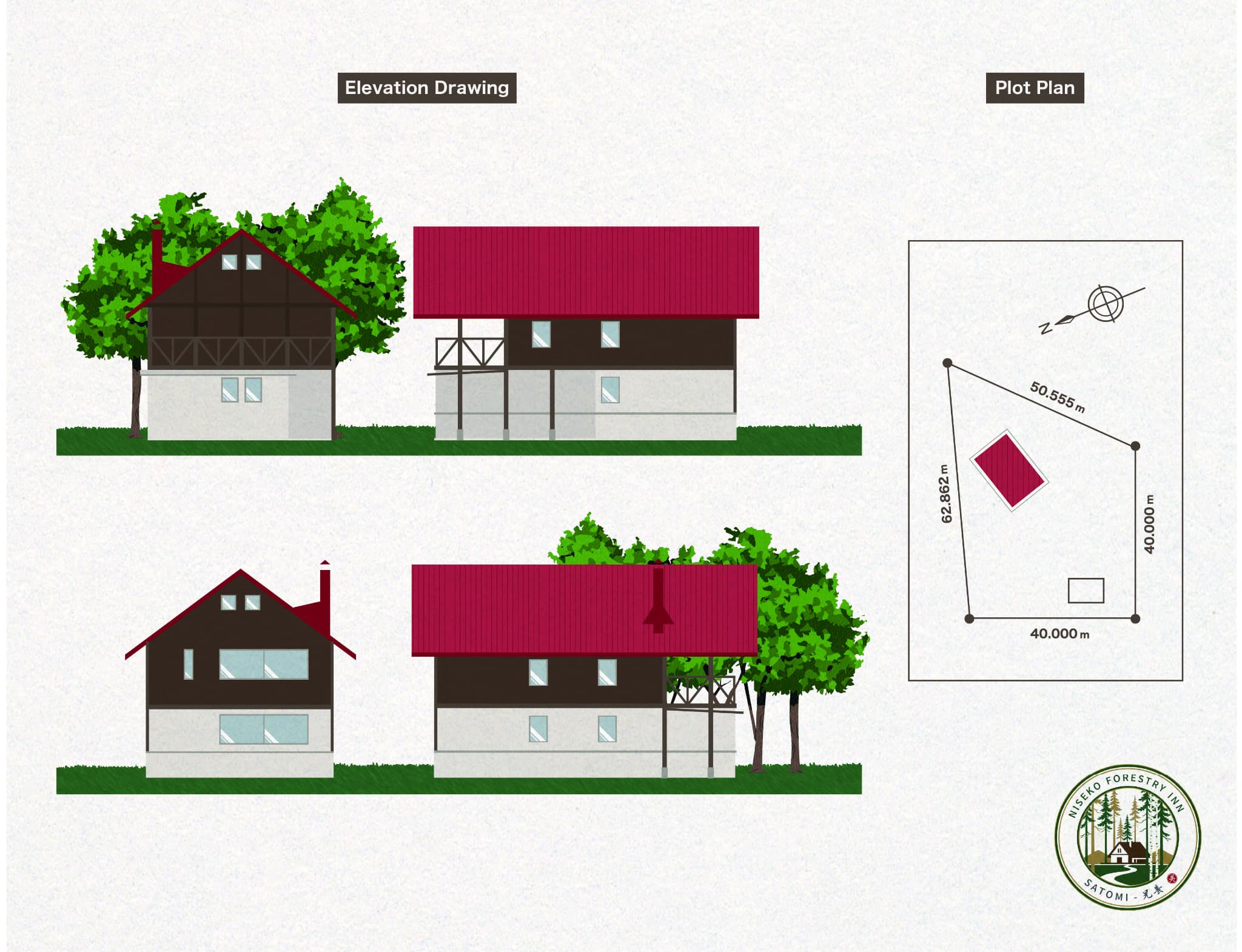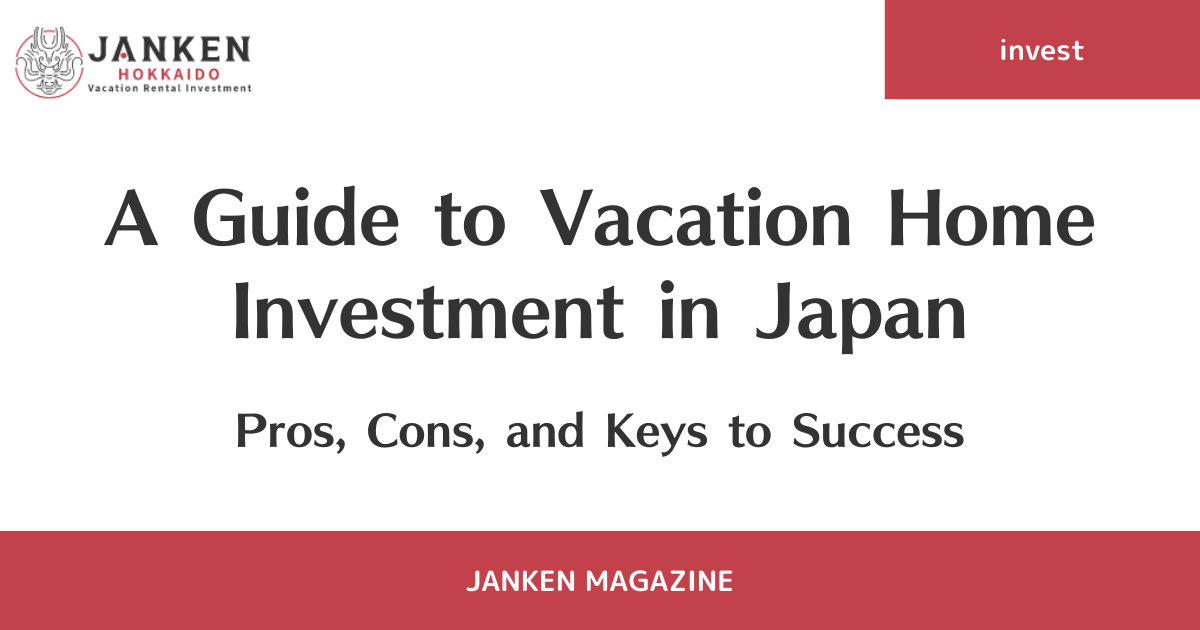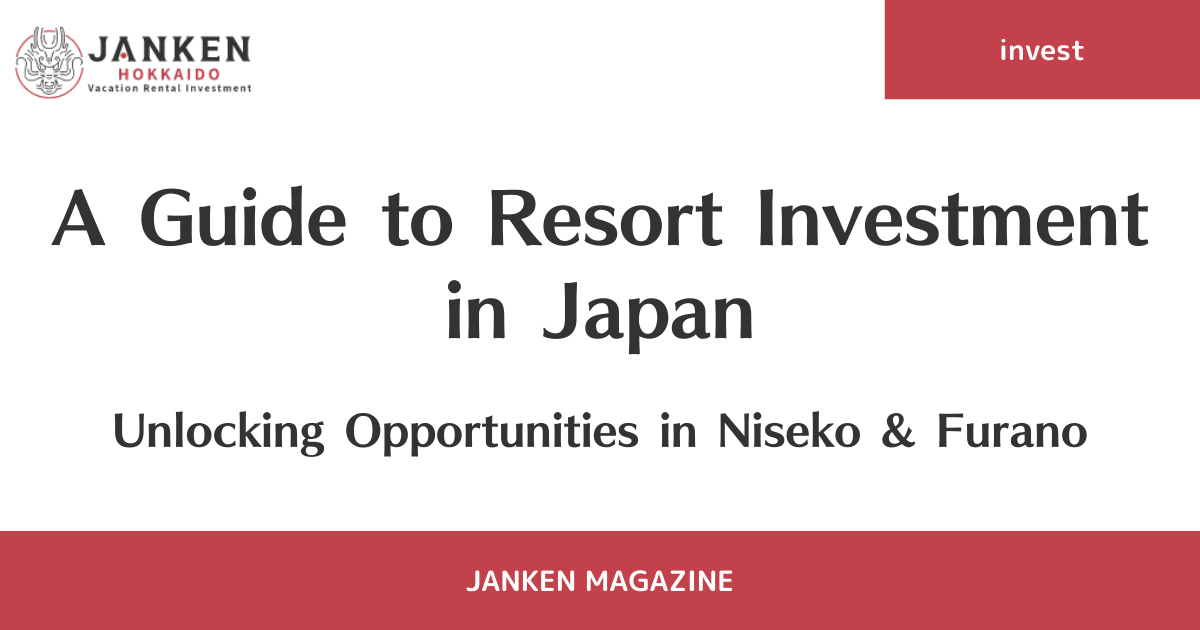How to Create a Welcome Guide for Vacation Rentals! Explaining the Benefits and Key Points for Making One! [Airbnb]
2024.09.18

Have you ever found yourself overwhelmed by guest inquiries or received feedback that your property’s instructions were unclear while managing your vacation rental on Airbnb?
The main cause of this might be your “welcome guide.”
In this article, we will discuss:
- What is a “welcome guide”?
- The benefits of creating a “welcome guide.”
- What to include in a “welcome guide” and tips for making one.
- The differences between an “access guide” and a “house manual.”
Contents
- 1 What is a Welcome Guide for Vacation Rentals?
- 2 The Benefits of Preparing a Welcome Guide for Vacation Rentals
- 3 What Should Be Included in a Welcome Guide for Vacation Rentals?
- 4 Key Points for Creating a Welcome Guide for Vacation Rentals
- 5 Conclusion
- 6 Leave the management of your vacation rental to JANKEN!
What is a Welcome Guide for Vacation Rentals?

A “welcome guide” in the context of vacation rentals is a guidebook that compiles important information needed by guests during their stay.
With this guide, guests can learn how to access the property, contact information, how to use the room’s amenities, and even details about the surrounding area, ensuring a comfortable and secure stay.
The welcome guide is generally divided into two main parts: the “house manual” and the “check-in guide.”
- Check-in Guide (Sent to guests in advance via PDF or other formats)
:This guide explains directions to the property and check-in procedures in detail. It helps guests arrive smoothly and check in without any issues. - House Manual (Kept at the property)
:This contains detailed explanations about the house, including instructions for using the amenities and important notices.
For vacation rental owners, the welcome guide is an essential tool for facilitating smooth communication with guests and improving guest satisfaction.
The Benefits of Preparing a Welcome Guide for Vacation Rentals
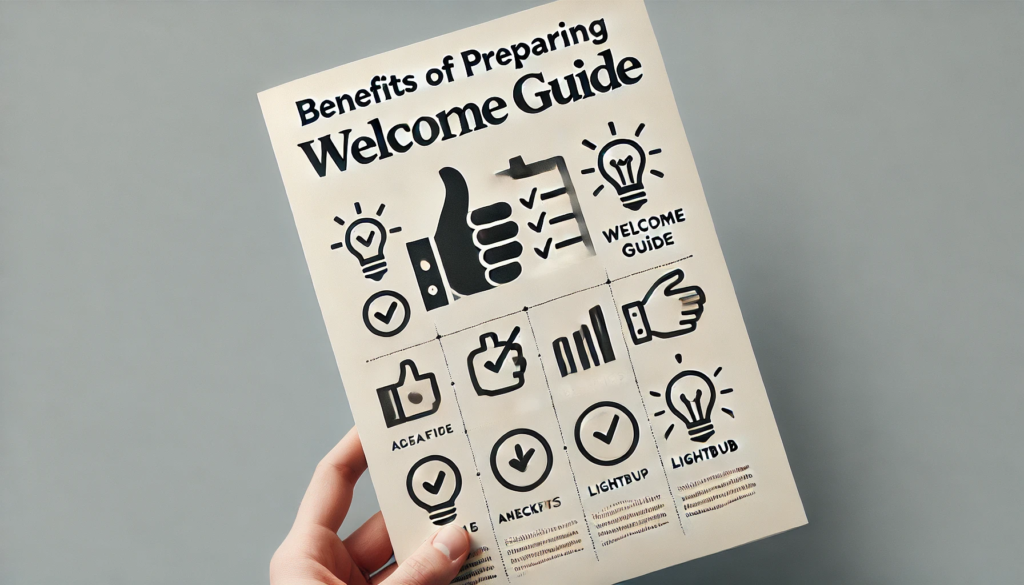
Preparing and running a vacation rental requires a lot of time and effort, but creating a “welcome guide” is essential for ensuring smooth operations in the long run.
It may feel like a hassle to prepare a welcome guide amidst a busy schedule.
However, without this guide, it is highly likely that the operational burden will increase, and guest reviews may drop as a result.
Here, we will explain the benefits of preparing a welcome guide.
Benefit ①: Reduces Guest Inquiries and Saves Operational Time
By creating a welcome guide in advance and including the necessary information, you can significantly reduce the time spent on guest inquiries, thus improving the efficiency of your vacation rental operation.
Without a welcome guide, guests will often ask about things like how to use the toilet, appliances, or where to find local restaurants.
If you respond to these inquiries each time, the operational burden will increase, making it hard to keep up.
In other words, having a welcome guide reduces guest inquiries, allowing for efficient management without being overwhelmed by constant guest communication.
Benefit ②: A Welcome Guide Enhances Guest Reviews
Most guests will refer to the welcome guide as soon as they arrive at the accommodation.
Additionally, if you send the welcome guide in advance as a PDF, guests can review details about the surrounding area and their stay beforehand, allowing them to enjoy their stay with peace of mind.
A well-prepared welcome guide helps guests feel that the host is attentive, which makes it easier to receive high reviews in guest feedback.
Higher ratings will likely attract more new visitors, offering a significant advantage for operating your vacation rental.
Benefit ③: A Welcome Guide Helps Prevent Troubles
A welcome guide is crucial for preventing issues in vacation rental operations.
The primary guests in vacation rentals are foreign tourists.
As such, vacation rental operations often face issues stemming from cultural differences, such as damaged equipment, noise, or improper waste disposal.
However, by clearly stating how to use the equipment, the need to keep quiet at night, and the rules for waste disposal in the welcome guide, you can significantly reduce the likelihood of such problems.
Vacation rental properties, especially in shared apartment buildings, can be hard to find, so it’s crucial to include detailed directions in the guide to prevent guests from getting lost.
Unlike hotels, most vacation rentals don’t have visible signage, so providing easy-to-understand directions beforehand can prevent guests from disturbing neighbors by asking for directions.
Also, including emergency contact numbers for fire, police, and hospitals that offer English support in the welcome guide will give guests peace of mind in case of an emergency, such as an injury or illness.
It’s essential to ensure that guests can handle situations on their own by providing all necessary information in the guide, especially when the host is not present.
Even in the event of an emergency where the host becomes unreachable, the welcome guide acts as an effective risk management tool to ensure guests don’t face difficulties.
With a well-crafted welcome guide, you can continue operating your vacation rental confidently, even in the case of unexpected situations.
What Should Be Included in a Welcome Guide for Vacation Rentals?

Now, let’s discuss what should be included in a welcome guide.
As mentioned earlier, the welcome guide is divided into a “check-in guide” and a “house manual.”
- Check-in Guide (Sent to guests in advance via PDF):
This provides detailed directions to the property and explains the check-in procedure to ensure guests arrive smoothly and can check in without any problems. - House Manual (Kept at the property):
This includes detailed explanations about the inside of the house, instructions for using amenities, and any important notes.
We will now explain what should be included in both the “check-in guide” and the “house manual.”
What to Include in a Check-in Guide
First, let’s discuss the items that should be included in the check-in guide.
The key items are as follows:
① Contact Information of the Host
To ensure guest convenience and peace of mind, it is essential to clearly state the host’s contact information.
Make sure to include both a phone number and an email address, and the host should be ready to respond at all times.
Since guests often contact the host in urgent situations, it’s important to display the contact information prominently, such as on the cover page.
To reduce the operational burden, you can also instruct guests to use Airbnb for non-urgent inquiries.
② Address of the Property
Make sure to include the address of the property.
③ Directions
In addition to providing the address, offer a clear guide on how to get from the nearest station to the property to ensure guests can arrive smoothly.
It’s a good idea to include both text and photos to make the directions more visually understandable.
Also, be sure to include detailed instructions on the check-in procedure once the guests arrive at the property to help them check in smoothly without confusion.
Furthermore, providing information on how to get to the property from major cities in the region (for example, Sapporo in Hokkaido) or from the airport, along with estimated transportation costs, will be helpful and reassuring for guests.
④ Key Handover Method
The key handover process is crucial to ensuring a smooth check-in for guests. A recommended method is using a key box for self check-in.
By including the four-digit key box code in the welcome guide, guests can check in automatically, even if the host is not physically present.
Using a key box not only reduces hassle but also helps mitigate risks. Handing the key directly to guests can be riskier and may become problematic if communication is lost.
For example, in cases of flight delays or issues with mobile devices, guests may not be able to contact the host.
To avoid such situations, it’s important to provide detailed instructions and photos in the welcome guide on how to use the key box.
⑤ Instructions for Check-in and Check-out
It’s important to include instructions not only for check-in but also for check-out procedures in the welcome guide.
You can include a checklist for check-out, such as the time by which guests should check out, turning off faucets, and switching off lights, to ensure that guests feel confident when checking out.
⑥ A Message of Thanks
Lastly, it’s a nice touch to express your gratitude to the guests in the welcome guide.
What to Include in a House Manual
Next, we will discuss what should be included in the house manual.
The key items are as follows:
① Parking Information
Many guests, especially in tourist areas, travel by car.
If your vacation rental property has its own parking space, be sure to include that information.
② Instructions for Using Amenities
It’s important to clearly explain how to use the amenities inside the property in the welcome guide.
This is especially important for foreign guests, as they may be unfamiliar with standard equipment in Japan. Detailed explanations are key.
- How to Use the Toilet:
Japanese toilets can be complex to operate. Include instructions with pictures explaining the wash and bidet functions. - Water Heater for the Bath:
Explain how to operate the automatic water heater. Be sure to detail temperature adjustments and timer settings. - How to Connect to Wi-Fi:
Provide the Wi-Fi ID and password, along with connection instructions. For guests unfamiliar with setting up Wi-Fi, screenshots or a simple guide would be helpful. - Remote Control for Air Conditioning and Television:
Explain the functions of each button, including how to set the air conditioning temperature and change TV channels. - How to Use the Washing Machine:
Since Japanese washing machines can sometimes be complicated, provide a step-by-step explanation from start to finish. - House Rules:
Clearly state the house rules, such as removing shoes indoors and keeping quiet at night, to ensure that guests understand them. - Additional Accommodation Fees:
Mention any additional charges (e.g., 2,500 yen per night for extra guests) and make sure to set this on your Airbnb listing as well. - Handling of Amenities:
Include a request for guests not to take items like towels home. This can help reduce costs for the host. - Noise Precautions:
Advise guests not to have parties late at night and ask them to be mindful of the neighbors. - No Smoking Policy:
Clearly state that the property is non-smoking and emphasize that smoking is prohibited.
③ Nearby Recommended Spots
Be sure to include information about the surrounding area in the welcome guide. Guests will appreciate this during their stay.
- Emergency Contacts:
List nearby banks, hospitals, and evacuation centers in case of an emergency. It’s also a good idea to include hotline numbers for fire departments, police, and hospitals that offer English support to ensure peace of mind for guests. - Recommended Restaurants and Shops:
Include information about popular local restaurants and shops. Since many Airbnb users enjoy discovering unique local spots, providing this information can significantly enhance guest satisfaction.
By including these details, guests can enjoy their stay with confidence, and it will improve their overall experience.
④ Additional Information
In addition to the information mentioned above, feel free to include any other useful details for your guests.
Examples:
- Information about nearby ATMs
- Instructions for using the water heater and heating/cooling systems
- Locations of currency exchange services
- Basic instructions for using public transportation
- Information about English-speaking taxi companies
- How to handle any issues that arise
- Instructions for using amenities and electrical appliances
Key Points for Creating a Welcome Guide for Vacation Rentals

Now that you understand what to include in the welcome guide, let’s move on to some key points to consider when creating it.
Point ①|Create a Multilingual Guide
Since many vacation rental users are foreigners, it is important to create a guide not only in Japanese but also in English and Chinese.
Preparing the guide in at least these three languages will help accommodate a wide range of guests.
Point ②|Use Photos to Make the Information Visually Clear
Incorporate as many photos as possible into the welcome guide to make the content easy to understand visually.
Avoid long explanations, and use pictures to convey information concisely, allowing guests to quickly grasp what they need to know.
Point ③|Keep It Short and Simple
To create a guide that’s easy for guests to understand, keep the text short and simple.
Use bold or underlined text to emphasize important information and make sure guests don’t overlook anything critical.
Point ④|Include a Frequently Asked Questions (FAQ) Section
Preemptively include a FAQ section with common guest questions in the guide.
This will reduce the host’s response time and help guests quickly resolve any concerns.
Conclusion
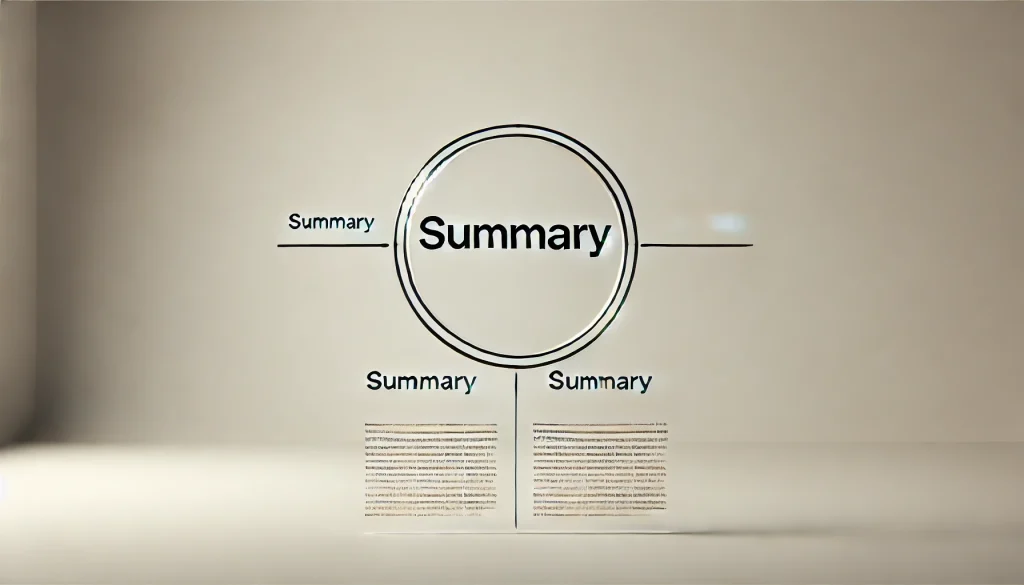
In this article, we covered:
- What is a “welcome guide”?
- The benefits of creating a welcome guide.
- What to include in a welcome guide and tips for creating one.
- The differences between an access guide and a house manual.
To successfully operate a vacation rental on Airbnb, a “welcome guide” is an essential element.
By creating a well-structured welcome guide, you can improve guest reviews, increase repeat visitors, and reduce the number of inquiries, all of which contribute to smoother vacation rental operations.
We hope this article encourages you to consider creating a welcome guide for your vacation rental.
Leave the management of your vacation rental to JANKEN!

There are many rules and complex procedures involved in running a vacation rental.
At our company, we can handle everything from creating the welcome guide to managing vacation rental operations, including all the necessary procedures.
- If you would like to request the creation of a welcome guide
- If you are interested in starting a vacation rental business
- If you want to make effective use of a vacant home or vacation property
- If you are curious about vacation rentals
If you have any interest in vacation rentals, please feel free to contact Kukan Inc.!








